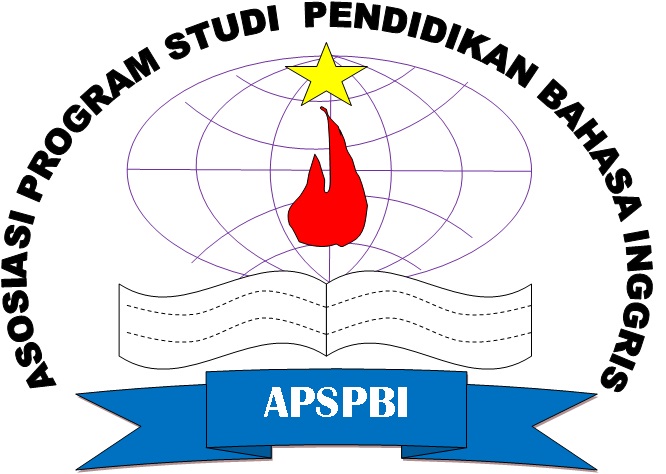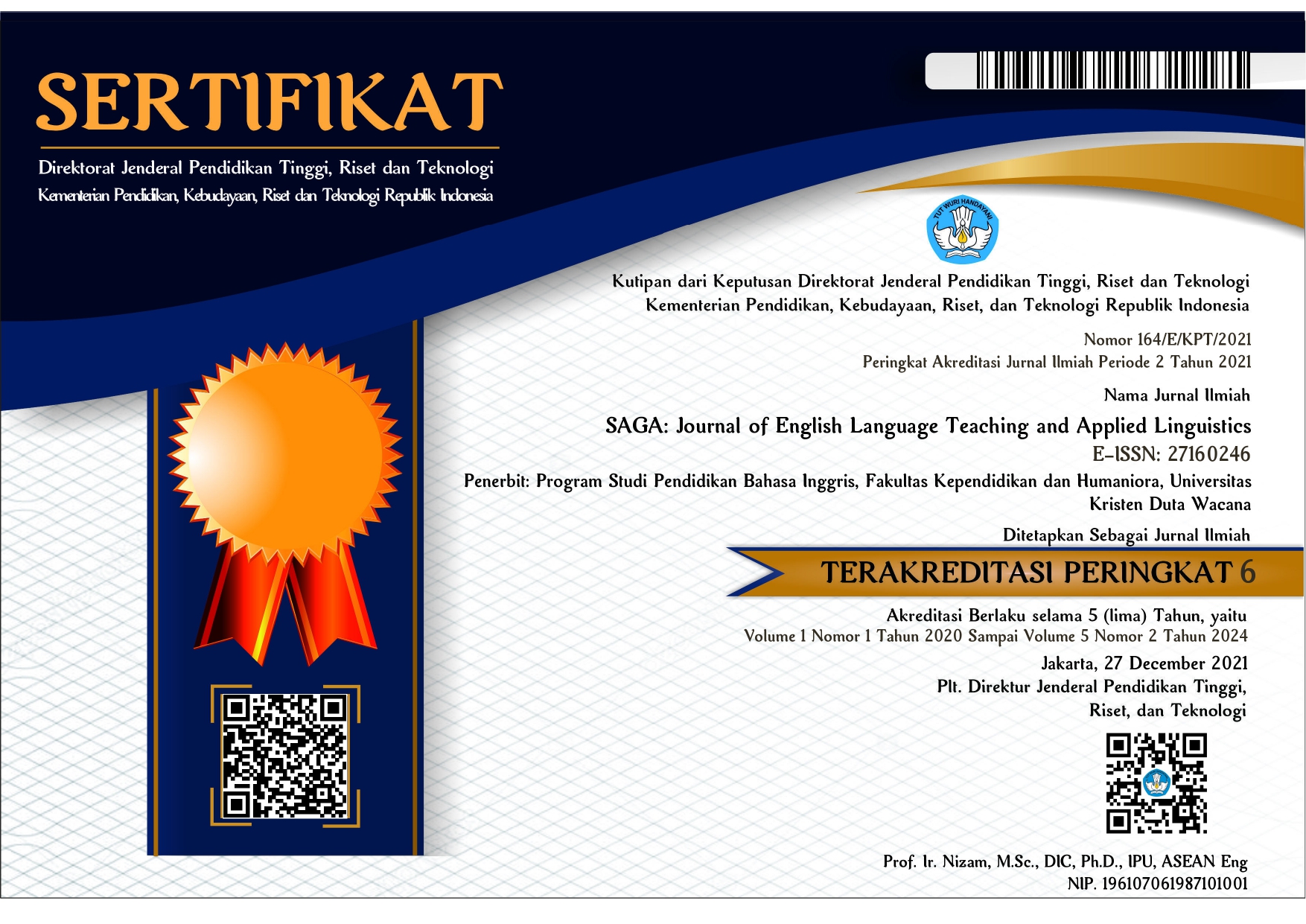Whatsapp for Mathematics Education Students’ Activeness in Learning English for Mathematics: A Case Study
DOI:
https://doi.org/10.21460/saga.2023.41.138Keywords:
WhatsApp, English for Mathematics, ActivenessAbstract
During the implementation of online learning in the new normal era, lecturers conducted the teaching and learning process by utilizing recent technology that could maximize the quality of the teaching and learning process. WhatsApp is one of the tools that is used as a teaching and learning medium in this new normal era. This is a case study that is aimed to explain whether the use of the WhatsApp application gave some effects on Mathematics Education students’ activeness in learning English for Mathematics. The participants of this research were the 4th semester Mathematics Education students’ who were studying English for Mathematics. The data from this study were obtained from observation and Focus Group Discussion. The findings revealed that the use of WhatsApp as an online learning medium affects students’ activeness in learning English for Mathematics in terms of speaking practice, students’ involvement, and students’ confidence.
References
Ahmadi, D. M. R. (2018). The use of technology in English language learning: A literature review. International Journal of Research in English Education, 3(2), 115–125. https://doi.org/10.29252/ijree.3.2.115
Ahmed, S. S. (2019). WhatsApp and learn English: A study of the effectiveness of WhatsApp in developing reading and writing skills in English. ELS Journal on Interdisciplinary Studies in Humanities, 2(2), 148–156. https://doi.org/10.34050/els-jish.v2i2.6419
Al-maqtri, M. A. T. (2014). How effective is e-learning in teaching English: A case study. Journal of Education and Human Development, 3(2), 647–669.
Amry, A. B. (2014). The impact of WhatApp mobile social learning on the achievement and attitudes of female students compared with face to face learning in the classroom. European Scientific Journal, 10(22), 116–136.
Barhoumi, C. (2015). The effectiveness of WhatsApp mobile learning activities guided by activity theory on students’ knowledge management. Contemporary Educational Technology, 6(3), 221-238.
Cai, H. (2012). E-learning and English teaching. IERI Procedia, 2, 841–846. https://doi.org/10.1016/j.ieri.2012.06.180
Daneshdoust, B., & Hagh, M. A. K. (2012). The advantages and disadvantages of Internet-based language learning in Iran. Procedia - Social and Behavioral Sciences, 31, 607–611. https://doi.org/10.1016/j.sbspro.2011.12.113
Indrasari, N. (2016). English for specific purposes: A need analysis at the second semester of physics education students of IAIN Raden Intan Lampung in the academic year of 2015/2016. English Education: Jurnal Tadris Bahasa Inggris, 9(1), 161–172.
Khotimah, H., Astuti, E. Y., & Apriani, D. (2019). Pendidikan berbasis teknologi: Permasalahan dan tantangan. Prosiding seminar nasional pendidikan program pascasarjana universitas PGRI Palembang (pp. 357–368). Universitas PGRI Palembang.
Kurniawati, L. A., & Malasari, S. (2022). Local wisdom in designing ESP for community-based tourism practitioners: A study of needs analysis. SAGA: Journal of English Language Teaching and Applied Linguistics, 3(2), 147–162. https://doi.org/10.21460/saga.2022.32.135
Kusumanungputri, R. (2010). English for specific purposes di Universitas Jember: Tantangan dan solusi. Pengembangan Pendidikan, 7(2), 182–189.
Lestari, S. (2020). Needs analysis to design a set of English teaching materials for non-English subject teachers. Edulink: Education and Linguistics Knowledge Journal, 2(1), 67. https://doi.org/10.32503/edulink.v2i1.996
Miangah, T. M. (2012). Mobile-assisted language learning. International Journal of Distributed and Parallel Systems, 3(1), 309–319. https://doi.org/10.5121/ijdps.2012.3126
Mistar, I., & Embi, M. A. (2016). Students’ perception on the use of WhatsApp as a learning tool in ESL classroom. Journal of Education and Social Sciences, 4, 1–9.
Mohammadi, N., Ghorbani, V., & Hamidi, F. (2011). Effects of e-learning on language learning. Procedia Computer Science, 3, 464–468. https://doi.org/10.1016/j.procs.2010.12.078
Napratilora, M., Lisa, H., & Bangsawan, I. (2020). Using WhatsApp as a learning media in teaching reading. MITRA PGMI: Jurnal Kependidikan MI, 6(2), 116–125. https://doi.org/10.46963/mpgmi.v6i2.129
No, V., & Lina, M. F. (2021). Maximizing WhatsApp group for students group presentation in learning English online: An introduction. INSANIA: Jurnal Pemikiran Alternatif Kependidikan, 26(2), 175–190.
Nuraeni, C., & Nurmalia, L. (2020). Utilizing WhatsApp application in English language learning classroom. Metathesis: Journal of English Language, Literature, and Teaching, 4(1), 89. https://doi.org/10.31002/metathesis.v4i1.2289
Panagiotis, A., & Krystalli, P. (2021). Mobile Assisted Language Learning (MALL): Trends from 2010 to 2020 using text analysis techniques. European Journal of Education, 4(1), 13. https://doi.org/10.26417/461iaw87u
Richards, J. (2015). Technology in language teaching today. Indonesian Journal of English Language Teaching, 10(1), 18–32.
Ummayah. R. (2018). Model pembelajaran berbasis teknologi. [Unpublished master's thesis]. Universitas Muhammadiyah Sidoarjo.
Salem, M. A. M., Bhaskar, C. V., Vadakalur E. K., & Abumelha, M. (2018). WhatsApp: An online platform for university-level English language education. Arab World English Journal, 9(4), 108–121. https://doi.org/10.24093/awej/vol9no4.7
Solihin, S. (2021). Using mobile-assisted language learning (MALL) to teach English in Indonesian context: Opportunities and challenges. VELES Voices of English Language Education Society, 5(2), 95–106. https://doi.org/10.29408/veles.v5i2.3150
Subekti, A. S. (2020). Covid-19-triggered online learning implementation: Pre-service English teachers’ beliefs. Metathesis: Journal of English Language Literature and Teaching, 4(3), 232–248.
Surani, D., & Chaerudin, A. (2020). Whatsapp grouping class for increasing students’ English ability. Proceedings of the twelfth conference on applied linguistics CONAPLIN 2019. Atlantis Press. https://doi.org/10.2991/assehr.k.200406.00625–28
Susilawati, S., & Supriyatno, T. (2020). Online learning through WhatsApp group in improving learning motivation in the era and post pandemic COVID -19. Jurnal Pendidikan: Teori, Penelitian, Dan Pengembangan, 5(6), 852. https://doi.org/10.17977/jptpp.v5i6.13670
Tirtanawati, M. R., & Salsabila, D. S. (2021). English students’ perception on the use of WhatsApp group in speaking class. Journal of English Language Teaching, Linguistics, and Literature Studies, 1(1), 1–19. https://doi.org/10.30984/jeltis.v1i1.1528
Usman, U. (2017). Dinamika pembelajaran berbasis teknologi informasi pada lembaga pendidikan tinggi. Jurnal Jurnalisa, 3(1), 61–75. https://doi.org/10.24252/jurnalisa.v3i1.3065
Zboun, J. S., & Farrah, M. (2021). Students’ perspectives of online language learning during corona pandemic: benefits and challenges. Indonesian EFL Journal, 7(1), 13–20.
















